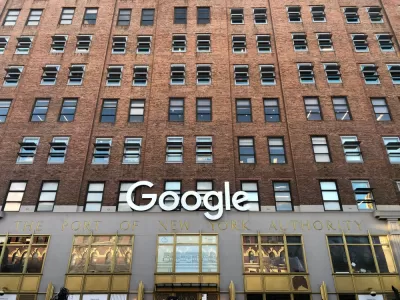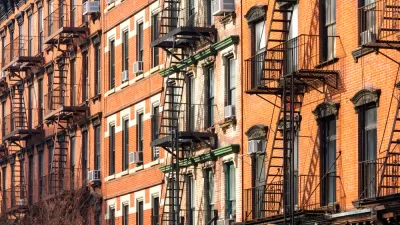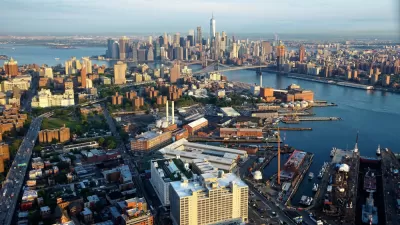Amidst the uncertainty of the pandemic, the four biggest U.S. technology companies have leased or bought enough office space in New York City for 22,000 employees.

Matthew Haag reports on a (perhaps) surprising twist in the story of office space in New York City: big tech companies Apple, Amazon, Facebook, and Google are quickly buying up and making plans for commercial properties in Manhattan: "Despite a pandemic that has ravaged New York, hollowed out many of its office buildings and raised fundamental questions about its future, the four companies collectively known as Big Tech are all significantly expanding their footprint in the city, giving it a badly needed vote of confidence."
The question of when those companies will start sending workers back to the office in these high-rent locations is still unclear—as with most other companies employing large numbers office workers in New York City's business district—but the fact that so many big, wealthy companies are betting on the future of the city is still notable.
"Facebook has just leased enough new office space in Manhattan to nearly triple its current local work force, including at one of the city’s most iconic buildings, the 107-year-old former main post office complex near Pennsylvania Station," explains Haag for evidence. "Apple, which set up its first office in New York a decade ago, is expanding to another building in Manhattan. And Google and Amazon are stitching together corporate campuses in the city more quickly than anywhere else in the world."
The companies are collectively hiring enough in the city to fill all of those new acquisitions. "Collectively, Amazon, Google, Facebook and Apple have hired more than 2,600 employees in the city so far this year, bringing their total employment to over 22,000 people. Facebook alone has added 1,100 workers to bring its current work force up to 4,000," according to Haag.
FULL STORY: Manhattan Emptied Out During the Pandemic. But Big Tech Is Moving In.

Maui's Vacation Rental Debate Turns Ugly
Verbal attacks, misinformation campaigns and fistfights plague a high-stakes debate to convert thousands of vacation rentals into long-term housing.

Planetizen Federal Action Tracker
A weekly monitor of how Trump’s orders and actions are impacting planners and planning in America.

In Urban Planning, AI Prompting Could be the New Design Thinking
Creativity has long been key to great urban design. What if we see AI as our new creative partner?

King County Supportive Housing Program Offers Hope for Unhoused Residents
The county is taking a ‘Housing First’ approach that prioritizes getting people into housing, then offering wraparound supportive services.

Researchers Use AI to Get Clearer Picture of US Housing
Analysts are using artificial intelligence to supercharge their research by allowing them to comb through data faster. Though these AI tools can be error prone, they save time and housing researchers are optimistic about the future.

Making Shared Micromobility More Inclusive
Cities and shared mobility system operators can do more to include people with disabilities in planning and operations, per a new report.
Urban Design for Planners 1: Software Tools
This six-course series explores essential urban design concepts using open source software and equips planners with the tools they need to participate fully in the urban design process.
Planning for Universal Design
Learn the tools for implementing Universal Design in planning regulations.
planning NEXT
Appalachian Highlands Housing Partners
Mpact (founded as Rail~Volution)
City of Camden Redevelopment Agency
City of Astoria
City of Portland
City of Laramie





























